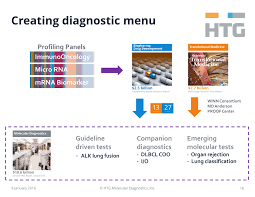
In a previous study, we demonstrated that transcriptomic profiles generated using the proprietary HTG Transcriptome Panel (HTP) support a transcriptome-informed drug discovery paradigm. Specifically, we demonstrated that closely related compounds were differentiated by their mRNA profiles, and that relevant biological information could be gleaned using the resulting expression data. This first proof of concept study used wellcharacterized compounds known to inhibit mTOR— itself a highly studied target—which allowed us to compare HTP data to those in public databases, then verify the biological findings using the literature to build confidence in the process. However, while the data compared favorably to previous studies, and indeed even uncovered novel biology, the scope of the first study was limited to transcriptome-based characterization of compounds, without a continuation to refinement of compound design based on the transcriptomic data. In this white paper, we build further toward true transcriptomeinformed drug design using the HTP, this time focusing on a small number of early-stage hits against our first therapeutic target of emphasis, here referred to as “HTGT1,” an undisclosed RNA modifying protein (RMP). RMPs regulate the modification of cellular RNAs. Over 170 RNA modifications have been described; collectively, these modified RNAs are known as the epitranscriptome.8,9 Modifications of RNA serve as an additional layer of control for regulation of location, stability, and fate. Numerous studies associate RMPs and/or the epitranscriptome with disease development and progression,demonstrating the importance of exquisite control of cellular RNAs. One advantage of an RMP target is that a modified sample preparation process allows the use of the HTP for identification and quantitation of the RNA targets of HTGT1. Between the transcriptomic profiles, modification profiles, and in vitro inhibition (IC50) data, each compound may thus be assessed for inhibition, mechanism of action, and downstream effects, prior to in vitro efficacy studies. The results can then be used to guide the refinement of the compound design. The results presented below support our previous observation that changes in the structure of a small molecule meaningfully affect the transcriptomic profile of cells treated with that compound. More importantly, the profiles support an understanding of how these compounds affect the cell, and how the cellular background modulates those effects. Through the examples below, we demonstrate how such insights may be utilized to de-risk early-stage hit compounds.
Learn more, be nice to your cells.













